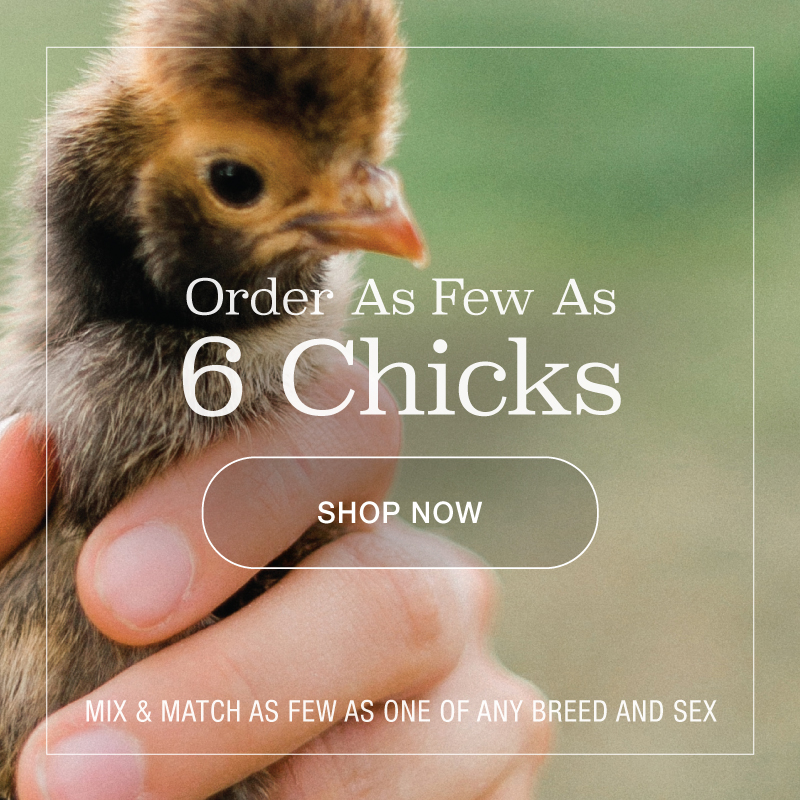Today, I contacted Sally, who is now 80 years old and who has raised chickens off and on her entire life and continuously for the past forty years. Forty years ago, Sally began with a flock of chickens, most of which she purchased from Murray McMurray Hatchery. It was a mixed flock, consisting of Buff Rocks, Ameraucanas, Black Jersey Giants, Brahmas, Dark Cornish, and Buff Cochins. Over the years, she added a few other chickens, such as Buff Orpingtons, Barred Rocks, and a bantam rooster. She has intentionally allowed the breeds to cross, and all of her current chickens are descended from her original flock.
Initially, Sally put leg bands on the pullets that went broody and culled all the pullets that had never gone broody in order to select for broodiness. After doing that for many years, she felt that she had gotten her flock to be broody enough, so she no longer selects in this way. To increase the diversity of each brood, she places eggs gathered from several of her hens under each of her broody hens.
Sally keeps each of her hens for about three years, then butchers them for meat. Each year, she changes out the roosters, processing the old roosters for meat, and keeping only the new, one year old roosters to perpetuate her flock.
Sally feeds her flock an all purpose ration, pastures them, provides free access to oyster shells, gives them alfalfa and sunflower seed at times, and feeds them barley and wheat raised by her sons.
The result of Sally’s efforts is that she has a flock whose reproduction is sustainable. She no longer needs to bring in any outside breeding stock, and her self-perpetuating and self-reproducing flock supplies meat and eggs for her, her family, and others. She feels that her egg production is mediocre in comparison to current production strains, but she has different goals, and through persistence and diligence, she has achieved them.
Years ago, Sally became concerned that her family’s food supply was heavily dependent on things that she did not feel were entirely dependable, such as a well functioning electrical grid and a functioning communication system and food distribution system. She wanted a sustainable flock of chickens that she could keep in order to provide food for her family dependably, and that is what she has raised.
[The person I interviewed for this article asked to remain anonymous. So the name used in this article, Sally, is not her real name.]



I love Sally’s story too. She is doing what I hope to be doing in years to come. GO SALLY!
Here is how I know whether or not one of my hens is broody:
I try and put my hand in the nest box, if she growls at me…I stop! Hens tend to get quite upset if you try and bother her and her eggs.
I have six, six month old Araucana hens. How soon will the start laying and will they lay their eggs in the coop instinctively or do I need to look around the yard? They are basically free range even though I have a pen and coop for them. Thanks!
I have a mixed flock of 24 that was given to me. They are maybe a year old. I’d like to add a rooster but since I have two banties and a silkie in the mix (as well as Americanas, Dominiques, etc.), I’m wondering if it matters what type of rooster I have? Will a big rooster be a problem with little hens?
Jennifer brings up a great question that I’ve been wondering about as I’ve started raising chickens on a larger scale over the last two years. Can you recommend any reading materials for those of us that are interested in self-sustaining flocks? I’m particularly interested as it relates to assisting in the recovery of threatened breeds.
Oh how I wish I could see some pictures of Sally’s flock! I have had the same line of mixed chickens for many years. All they want to do is make babies! I just received my new order from McMurry about three weeks ago. I ordered chickens that are not broody! I can’t wait for them to grow up. I should have enough eggs for the world!
I hope at 80 I’ll be doing the same. The article doesn’t mention the size of her flock but it would seem after 40 years, even though many breeds make up her flock, at this point her gene pool is pretty limited. The only thing I could see that she might consider is bringing in an outside rooster of a breed known for broodiness of course, to add some vigor to her line. However, I am not a geneticist so I could be way off base in my thinking.
Her flock contains 90 chickens.
Do I run rooster with hens – was told they they had lower cholesterol if eggs were fertile? true/false? How do I know if the hen is actually broody? I can separate broody hens – my cats ate the chicks but how do I know in nesting boxes if the one sitting inside is broody or laying on top of other eggs. I’m longing for baby chicks. Do I band everyone laying an egg say blue and if broody say yellow to know if they’re all laying? I’ve spent a fortune trying unsuccessfully to get chicks. Can guinea fowl run free or do they need a pen?
We have many excellent reference books that may help answer your questions. We recommend A Guide to Raising Chickens (catalog # 731) and Gardening with Guineas, both of which are very informative.
Roosters can be raised with hens. Cholesterol content is the same whether the egg is fertile or not.
You can identify a broody hen because she will continue to sit on the nest, and she will not like to be disturbed for any reason. If a hen is not broody, you can easily move her off the nest, and she won’t mind.
You may design a system of banding that works best for you.
Guineas can be penned, bit more commonly they are free ranged. Guineas like to roost in high places, and they especially enjoy roosting in trees. To protect them from predators, you may want to consider housing them at night.